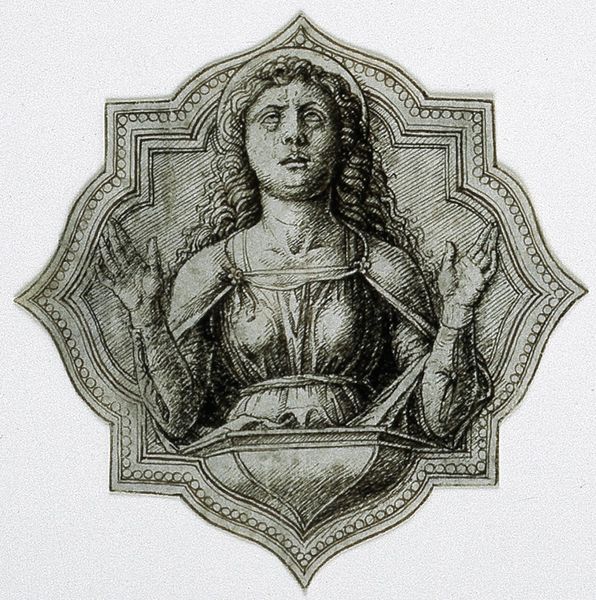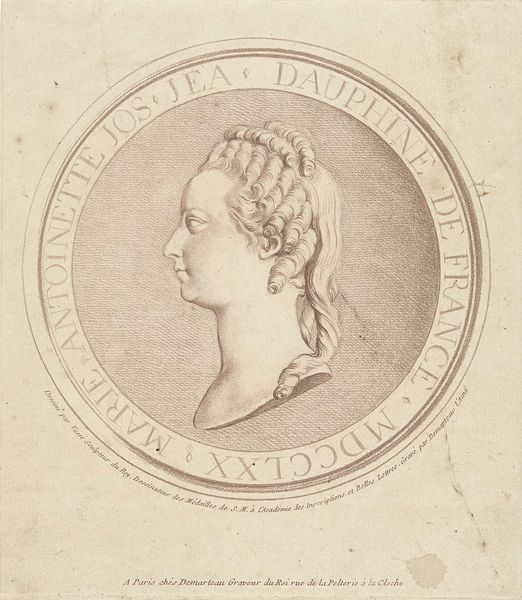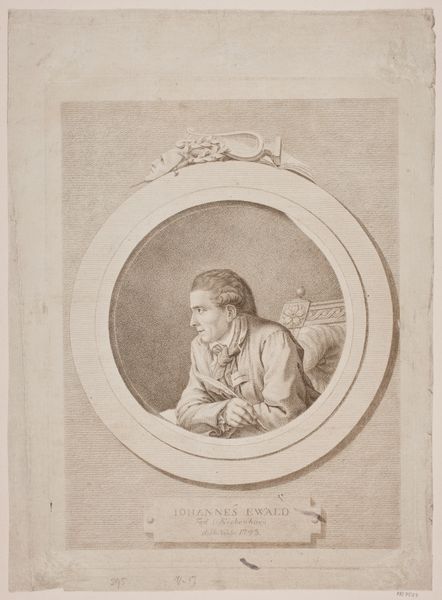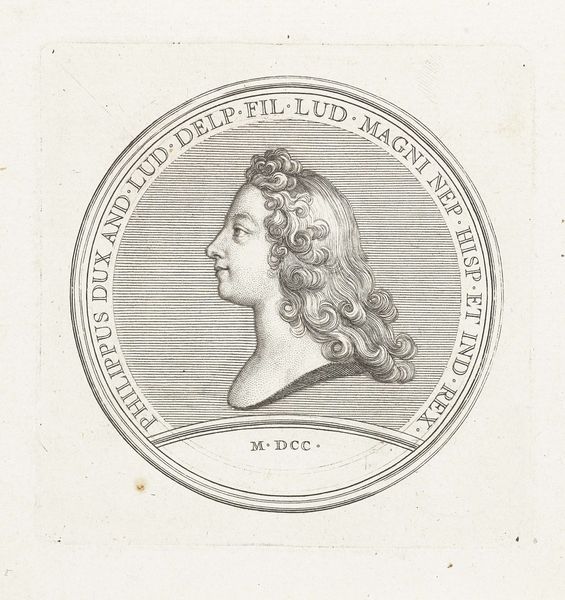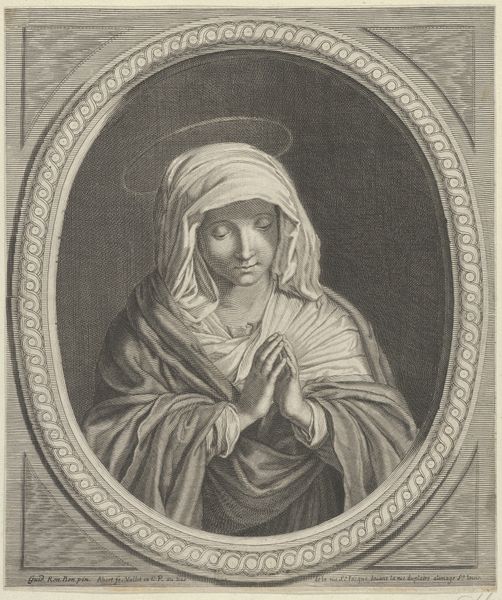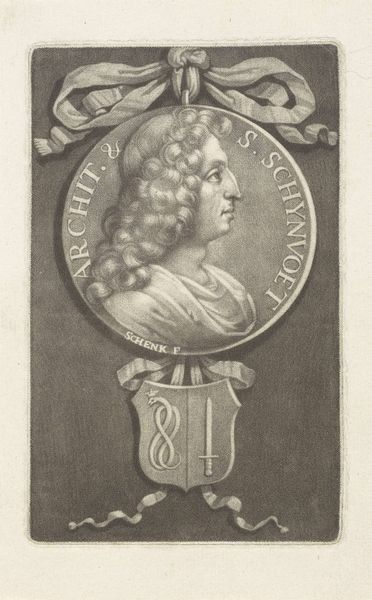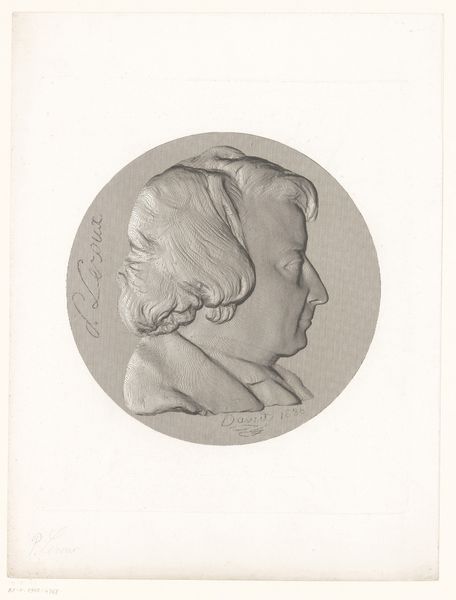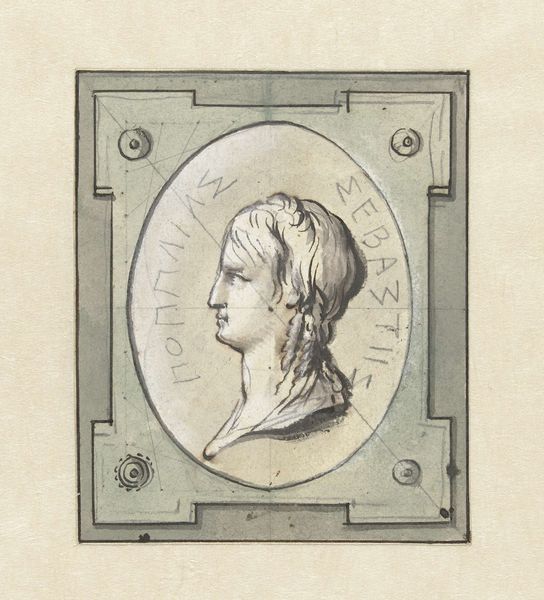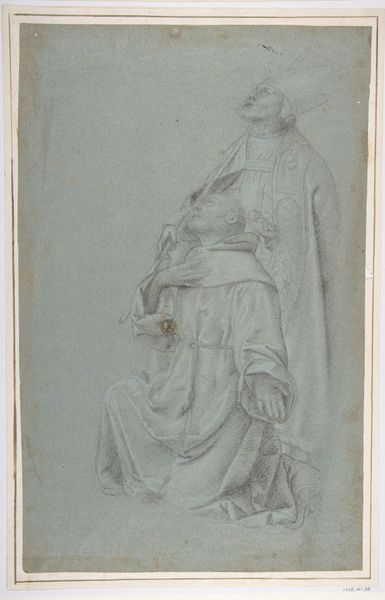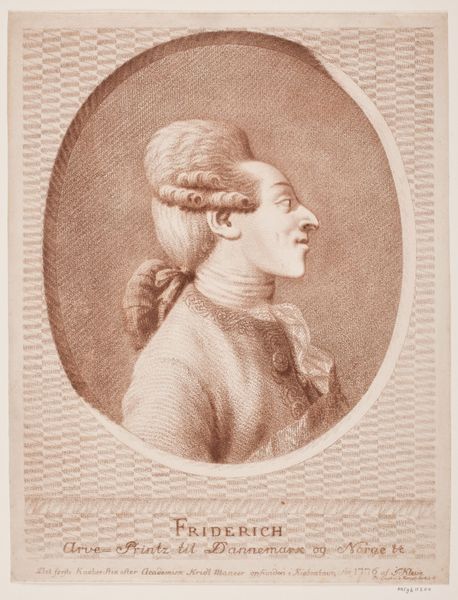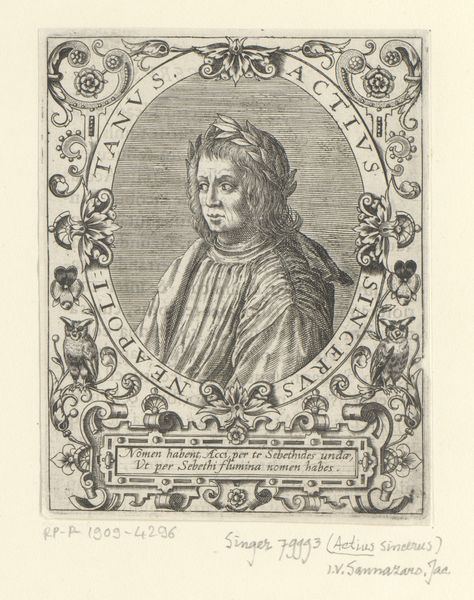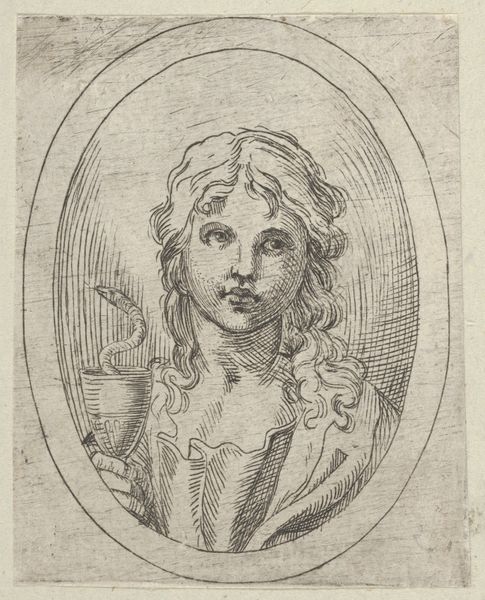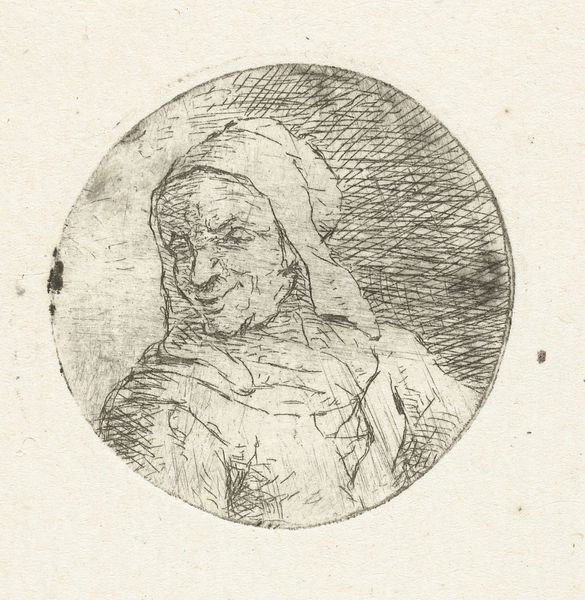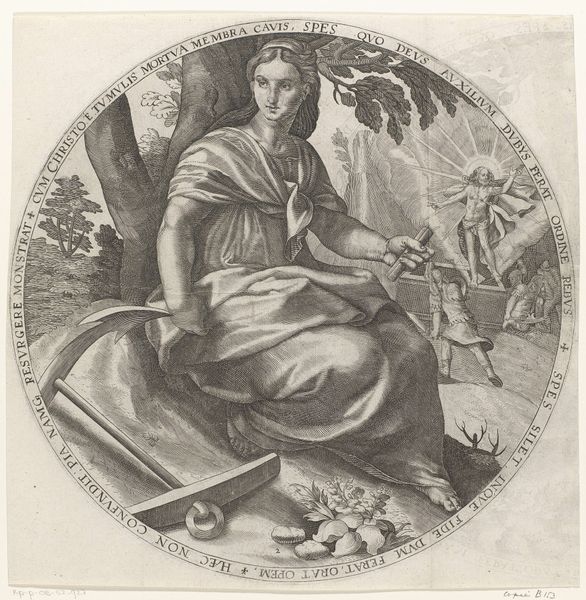
drawing, print, engraving
#
portrait
#
drawing
# print
#
figuration
#
11_renaissance
#
portrait reference
#
12_15th-century
#
portrait drawing
#
history-painting
#
italian-renaissance
#
engraving
Copyright: Städel Museum, Frankfurt am Main
Curator: Here we have "St. John the Evangelist," an engraving by Andrea Mantegna dating from around 1470 to 1490, housed here at the Städel Museum. The engraving captures a figure holding a book, encircled by an ornate, decorative frame. Editor: My initial impression is one of intense scrutiny. There’s a gravity, almost a sternness, in his expression that suggests deep contemplation—or perhaps even judgment. Curator: The furrowed brow, the pursed lips, they are a far cry from the beatific portrayals of saints we often see. Mantegna presents St. John as a figure burdened by knowledge, a seer perhaps troubled by his visions. And, given that St. John wrote the Book of Revelation, this resonates deeply. Editor: Absolutely. Consider the sociopolitical landscape of the time. The church held immense power, dictating morality and suppressing dissent. Depicting a saint with such a troubled visage subtly challenges that unwavering authority, opening a space for questioning and individual interpretation. Curator: The book itself acts as a key symbol, doesn’t it? Knowledge can liberate, but also carries a heavy burden. It’s a visual echo of the weight of prophecy. And, think about the medium itself: engraving. The precision required mirrors the deliberate, weighty words St. John committed to scripture. Editor: The frame, though decorative, feels restrictive. St. John is contained, almost trapped, within these rigid societal and religious boundaries. It mirrors the constraints placed upon even the most revered figures. We must ask ourselves what it means to confine a holy figure. Curator: An interesting perspective. To me, the frame serves to elevate St. John. But thinking through that lens, it reminds me that religious figures can and often are weaponized to carry social expectations. Editor: Yes, which forces us to confront these very expectations by looking more deeply at this singular man. He offers a stark look into the inner self while he holds great significance and consequence. Curator: Precisely. This small print holds volumes, urging us to decode not just religious iconography but the complex relationship between faith, power, and the individual. Editor: It leaves me thinking about how artistic representation shapes our understanding of authority and challenges established narratives. Curator: Indeed, and what this says about our cultural perception of holiness.
Comments
No comments
Be the first to comment and join the conversation on the ultimate creative platform.
